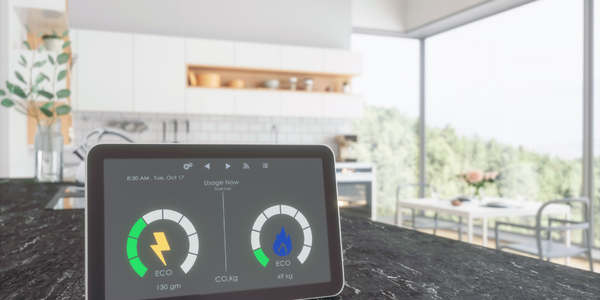
技术
- 平台即服务 (PaaS) - 数据管理平台
适用功能
- 产品研发
用例
- 高级计量架构 (AMI)
客户
三叉戟网络
关于客户
Trident Network 是一家位于德克萨斯州的系统集成制造商,专注于能源和水市场,提供下一代 AMI 和智能计量解决方案。
挑战
Trident Network 是一家快速发展的中端市场公司,其设计的设备和组件使商业和工业客户能够远程降低水、电或气的消耗。分计量允许监控设施内任何电路或管道上的资源使用情况,从而创建有关资源使用情况的详细信息。他们新产品线的关键是 MeterReader™,它覆盖了北美商业设施中安装的现有 OEM 仪表技术,允许管理旧技术并利用更新的 Trident Network 子计量产品。
解决方案
我们的目标是从公司成立的第一天起就开发一种互联产品。作为市场的新进入者,公司需要将精力和资源集中在硬件以及内部通信组件和固件的持续开发上。为此,Trident Network 评估了几家物联网平台供应商以及可以创建定制解决方案的软件开发商。在 Autodesk® SeeControl® 的销售过程中,Trident 能够使用和测试来自 SeeControl 模板商店的功能性抄表系统,并在一天内根据他们的独特需求对其进行了定制。从那里开始,决定很容易,因为解决方案已准备好启动。自 SeeControl 的初始测试和推出以来,Trident 已经能够多次修改和扩展其物联网产品,而无需任何内部编程或 IT 知识。并且无需关闭系统以进行功能创建和部署。
收集的数据
Electricity Meters, Gas Meters, Water Usage
运营影响
数量效益

Case Study missing?
Start adding your own!
Register with your work email and create a new case study profile for your business.
相关案例.

Case Study
IoT Solutions for Smart City | Internet of Things Case Study
There were several challenges faced: It is challenging to build an appliance that can withstand a wide range of voltage fluctuations from as low at 90v to as high as 320v. Since the device would be installed in remote locations, its resilience was of paramount importance. The device would have to deal with poor network coverage and have the ability to store and re-transmit data if networks were not available, which is often the case in rural India. The device could store up to 30 days of data.

Case Study
GPRS Mobile Network for Smart Metering
Around the world, the electricity supply industry is turning to ‘smart’ meters to lower costs, reduce emissions and improve the management of customer supplies. Smart meters collect detailed consumption information and using this feedback consumers can better understand their energy usage which in turn enables them to modify their consumption to save money and help to cut carbon emissions. A smart meter can be defined in many ways, but generally includes an element of two-way communication between the household meter and the utility provider to efficiently collect detailed energy usage data. Some implementations include consumer feedback beyond the energy bill to include online web data, SMS text messages or an information display in consumers’ premises. Providing a cost-effective, reliable communications mechanism is one of the most challenging aspects of a smart meter implementation. In New Zealand, the utilities have embraced smart metering and designed cost effective ways for it to be implemented. The New Zealand government has encouraged such a move to smart metering by ensuring the energy legislation is consistent with the delivery of benefits to the consumer while allowing innovation in this area. On the ground, AMS is a leader in the deployment of smart metering and associated services. Several of New Zealand’s energy retailers were looking for smart metering services for their residential and small business customers which will eventually account for over 500,000 meters when the multi-year national deployment program is concluded. To respond to these requirements, AMS needed to put together a solution that included data communications between each meter and the central data collection point and the solution proposed by Vodafone satisfied that requirement.

Case Study
NB-IoT connected smart meters to improve gas metering in Shenzhen
Shenzhen Gas has a large fleet of existing gas meters, which are installed in a variety of hard to reach locations, such as indoors and underground, meaning that existing communications networks have struggled to maintain connectivity with all meters. The meter success rate is low, data transmissions are so far unstable and power consumption is too high. Against this background, Shenzhen Gas, China Telecom, Huawei, and Goldcard have jointly trialed NB-IoT gas meters to try and solve some of the challenges that the industry faces with today’s smart gas meters.

Case Study
British Gas Modernizes its Operations with Innovative Smart Metering Deployment
The UK government has mandated that smart meters are rolled out as standard across Great Britain by end of 2020, and this roll-out is estimated to create £14 billion in net benefits to the UK in consumer energy savings and lower energy generation demand, according to the Oxford Economics report, “The Value of Smart Metering to Great Britain.” While smart-metering systems have been deployed in many countries, the roll-out in Great Britain is unique because it is led by energy retailers, who have responsibility for the Electricity and Gas meters. The decision to have a retailer-led roll out was made by DECC (Department of Energy and Climate Change) to improve customer experience and drive consumer benefits. It has also led to some unique system-level requirements to support the unique local regulatory model.

Case Study
Transport Platform - Serving the Energy Data Management
The challenge for EWZ was to design the processes so that they could be traced easily and meet the standards for handling exchange processes in line with the market such as automation of bulk data exchange and exchange processes as well as their implementation according to the SDAT and MC-CH industry documents, integration of the very heterogeneous IT landscape, and no in-house development but a tried and tested standard product.

Case Study
Hydro One Leads the Way In Smart Meter Development
In 2010, Ontario’s energy board mandated that time-of-use (TOU) pricing for consumers be available for all consumers on a regulated price plan. To meet this requirement, Hydro One needed to quickly deploy a smart meter and intelligent communications network solution to meet the provincial government’s requirement at a low cost. The network needed to cover Hydro One’s expansive service territory, which has a land mass twice the size of Texas, and its customers live in a mix of urban, rural, and remote areas, some places only accessible by air, rail, boat or snowmobile. Most importantly, the network needed to enable future enterprise-wide business efficiencies, modernization of distribution infrastructure and enhanced customer service. To meet these needs, Hydro One conceptualized an end-to-end solution leveraging open standards and Internet Protocols (IP) at all communication levels. The utility drew upon industry leaders like Trilliant to realize this vision.



